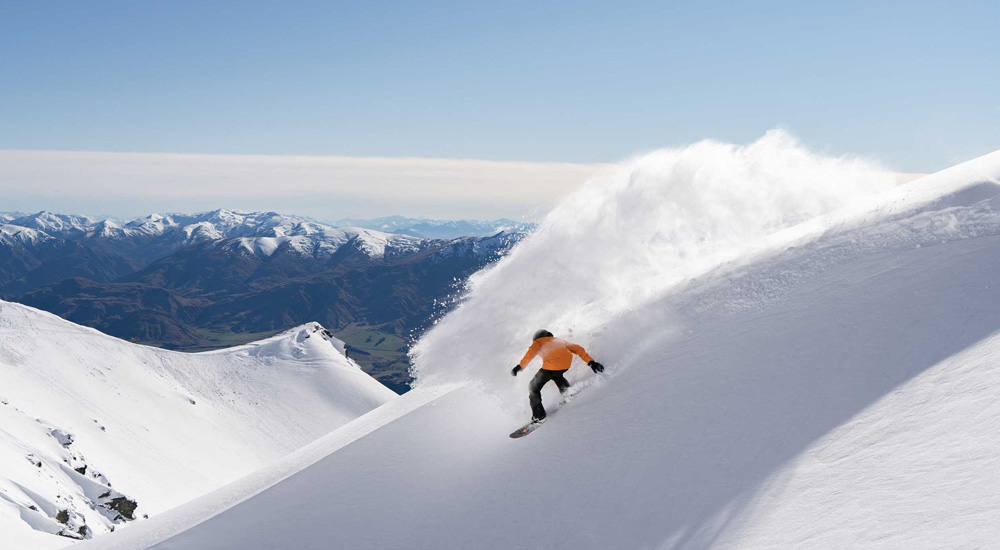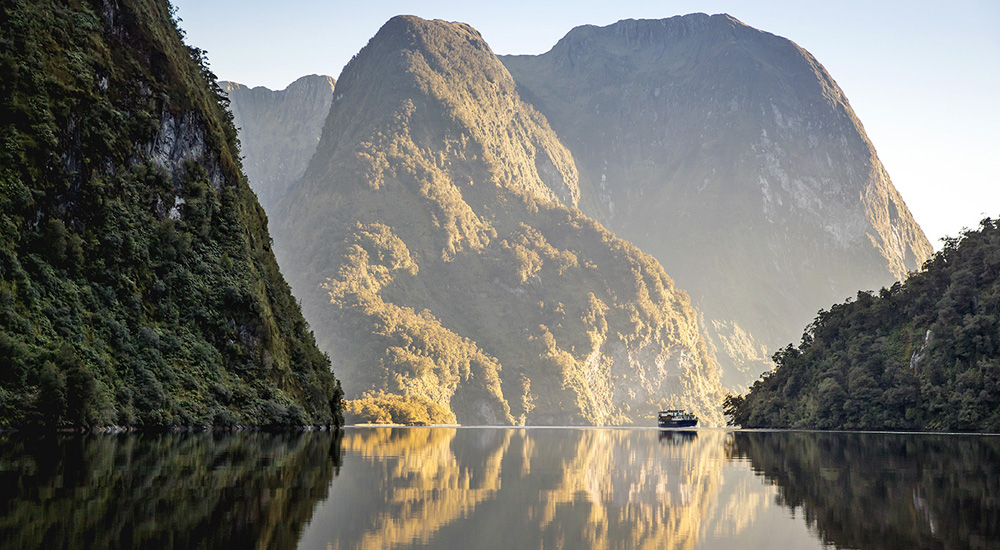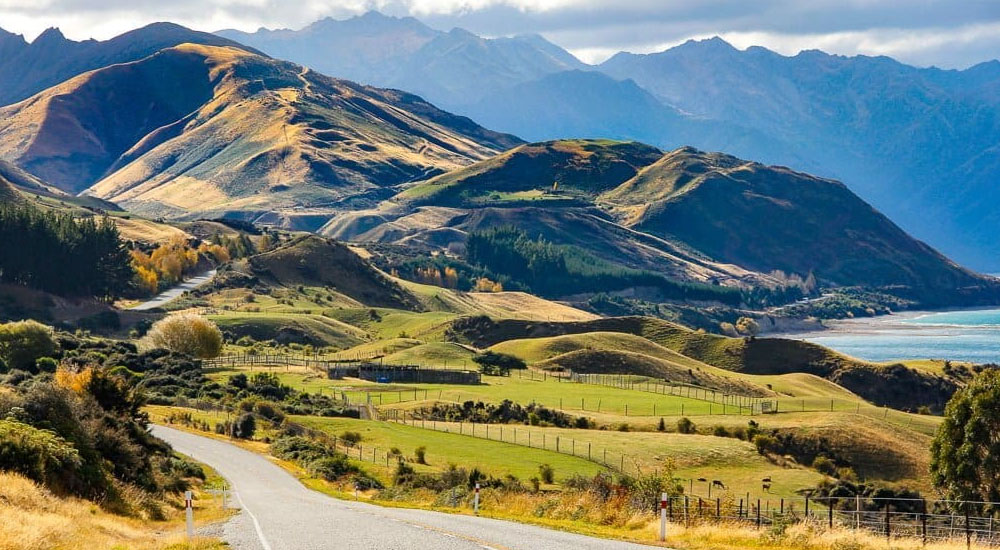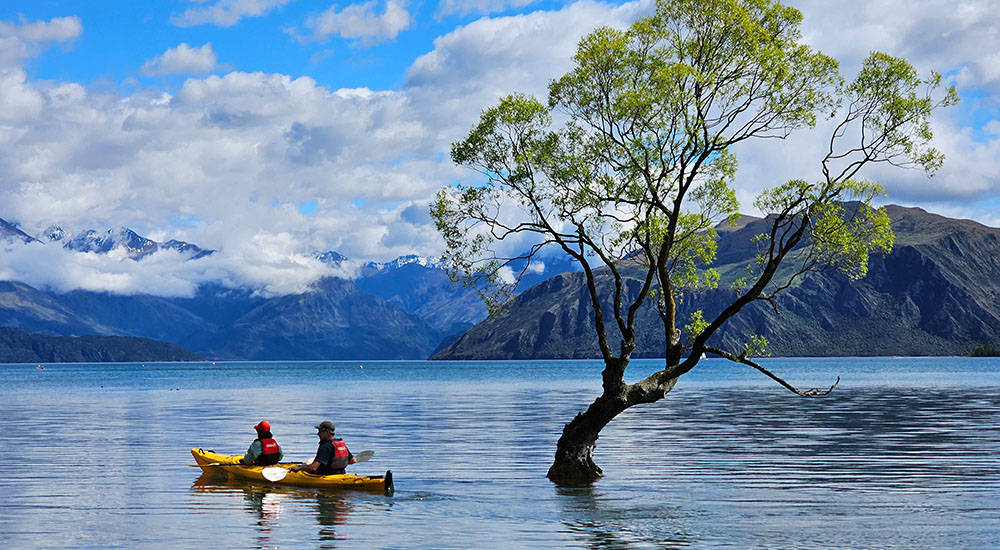Discover the 13 National Parks of New Zealand
Hey there, fellow adventurers, Phil Boorman here, ready to guide you through another exciting journey! This time, we’re diving deep into the heart of New Zealand’s natural wonders – our magnificent National Parks. These protected areas showcase the very best of New Zealand’s landscapes, from towering mountains and glaciers to pristine coastlines, ancient forests, and geothermal wonders.
Whether you’re an avid hiker, a nature photographer, or simply someone who appreciates the beauty of the natural world, New Zealand’s National Parks offer something for everyone. So, pack your boots, grab your camera, and let’s embark on an adventure through these diverse landscapes!
The 13 National Parks of New Zealand are:
- Tongariro National Park
- Egmont National Park
- Whanganui National Park
- Fiordland National Park
- Aoraki/Mount Cook National Park
- Mount Aspiring National Park
- Arthur’s Pass National Park
- Paparoa National Park
- Westland Tai Poutini National Park
- Abel Tasman National Park
- Rakiura National Park
- Kahurangi National Park
- Nelson Lakes National Park
Tongariro National Park
Tongariro National Park, New Zealand’s oldest national park, truly captures the power of nature. Located in the central North Island, this vast park is a wonderland of volcanic landscapes, alpine meadows, emerald lakes, and ancient forests. It’s a place that has captivated me since I first set foot on its trails, and I always feel a sense of awe when I return.
Tongariro is steeped in history and cultural significance. Gifted to the nation by the Ngāti Tūwharetoa Māori chief, Te Heuheu Tukino IV, in 1887, to protect its sacred mountains, this act of generosity led to the establishment of New Zealand’s national park system. Tongariro holds the distinction of being the fourth national park created in the world. The park’s volcanic peaks, Ngauruhoe, Ruapehu, and Tongariro, are tapu (sacred) to the Māori people and play a significant role in their beliefs.
The park’s unique landscape is a result of its volcanic origins. Over millennia, eruptions have shaped the terrain, creating peaks, craters, lava flows, and geothermal areas. The climate here is as diverse as the landscape, with warm summers, cold winters, and unpredictable weather. Despite the challenging conditions, a variety of plants and animals thrive here, including the North Island brown kiwi, the blue duck (whio), and the rare karearea (New Zealand falcon).
The Tongariro Alpine Crossing is a challenging but rewarding one-day hike that takes you through some of the park’s most spectacular scenery. I’ve hiked this trail many times, and it never ceases to amaze me. You’ll traverse volcanic craters, walk alongside steaming vents, and pass by the vibrant Emerald Lakes. The views from the Red Crater summit are simply breathtaking.
But Tongariro has much more to offer than just the Alpine Crossing. There are numerous other hiking trails to explore, from short walks to multi-day treks. The Tama Lakes Track is a great option for a shorter hike, leading you to two beautiful crater lakes. If you’re looking for a challenge, the Round the Mountain Track is a multi-day trek that circumnavigates Mount Ruapehu.
For those who prefer two wheels, Tongariro National Park also offers opportunities for cycling. The 42 Traverse is a challenging mountain bike track. There are also several shorter cycling trails suitable for families.
Beyond the trails, Tongariro offers opportunities for skiing and snowboarding on the slopes of Mount Ruapehu, fishing, and simply relaxing and soaking in the beauty of the surroundings. Whether you’re seeking adventure, tranquility, or a deeper connection with nature, Tongariro National Park is a destination that will leave a lasting impression. It’s a place where you can witness the power of the earth, experience the cultural heritage of the Māori people, and immerse yourself in the beauty of New Zealand’s unique environment.
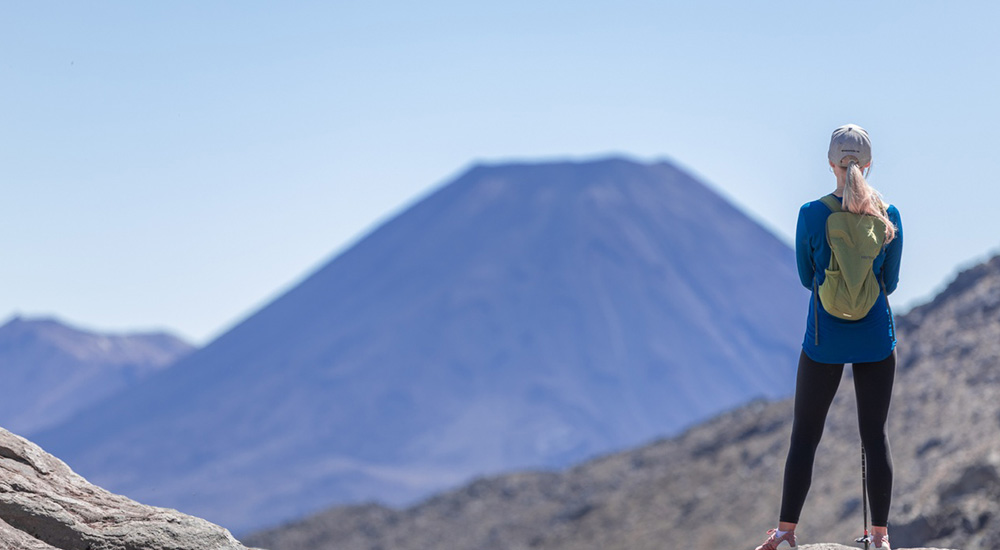
Egmont National Park
Egmont National Park, on the west coast of the North Island, holds a special kind of magic. Dominated by the cone of Mount Taranaki, it’s a park that draws you in with its beauty and diverse landscapes. I’ve spent countless hours exploring its trails, and I’m always left feeling refreshed and inspired.
What makes Egmont so unique is the way the landscape changes as you ascend Mount Taranaki. You begin in lush rainforest, with towering trees and ferns. As you climb higher, the forest gives way to alpine meadows, where wildflowers bloom. And finally, you reach the volcanic slopes, with their stark beauty and panoramic views.
The vistas from Mount Taranaki are breathtaking. On a clear day, you can see for miles, taking in the Tasman Sea, the surrounding farmland, and even the distant peaks of the Ruahine and Tararua Ranges.
For those who love to hike, Egmont National Park is a dream. There are trails for all levels, from short walks to multi-day treks. One of my favorites is the Pouakai Crossing, a two to three-day journey that takes you through some of the park’s most stunning scenery. You’ll traverse the Ahukawakawa Swamp and climb to the Pouakai Range for incredible views of Mount Taranaki.
Of course, no visit to Egmont would be complete without experiencing the mountain itself. The summit track is a challenging but rewarding climb. It’s a demanding hike, but the sense of accomplishment and the panoramic views from the summit are worth the effort. Just remember to check the weather conditions before you go, as the mountain can be unpredictable.
But Egmont isn’t just about hiking. There are plenty of other activities to enjoy, from camping and picnicking to mountain biking and birdwatching. You can even explore the park’s volcanic history at the North Egmont Visitor Centre. Whether you’re seeking adventure, tranquility, or simply a chance to reconnect with nature, Egmont National Park is a destination that will capture your heart.
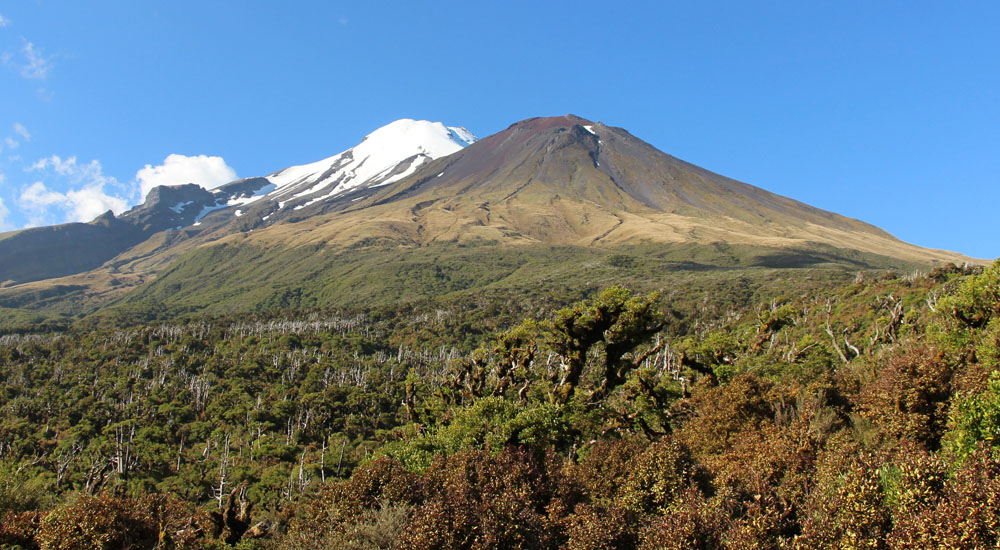
Whanganui National Park
Whanganui National Park, in the heart of the North Island, holds a special kind of magic. It’s a park defined by the Whanganui River, New Zealand’s longest navigable waterway, and it’s a place where you can escape and immerse yourself in the tranquility of nature.
I’ve spent many days exploring this park, and I’m always struck by its sense of peace and isolation. The dense forests, steep gorges, and hidden waterfalls create a feeling of being transported back in time. The Whanganui River is more than just a waterway; it’s a living entity, revered by the local Māori people as a Tupuna (ancestor). Their history and culture are deeply intertwined with the river.
One of the best ways to experience Whanganui National Park is by canoe or kayak. Paddling down the river, you’ll be surrounded by lush native forest. You’ll encounter cascading waterfalls, hidden swimming holes, and ancient Māori sites. It’s a journey that allows you to connect with nature on a deeper level.
If you prefer to explore on foot, there are numerous hiking trails. The Matemateaonga Track is a challenging multi-day trek. For a shorter walk, the Bridge to Nowhere Track is a fascinating journey through history.
Whanganui National Park is also home to a unique cycle trail – the Mangapurua Track. This track follows an old road that was built to access a remote settlement. The settlement was eventually abandoned, and the road fell into disrepair, but it has now been restored as a challenging and rewarding cycle trail.
Whether you choose to explore by canoe, kayak, foot, or bike, Whanganui National Park offers a unique and unforgettable experience. It’s a place to disconnect from the modern world, reconnect with nature, and discover the cultural heritage of the Whanganui River.
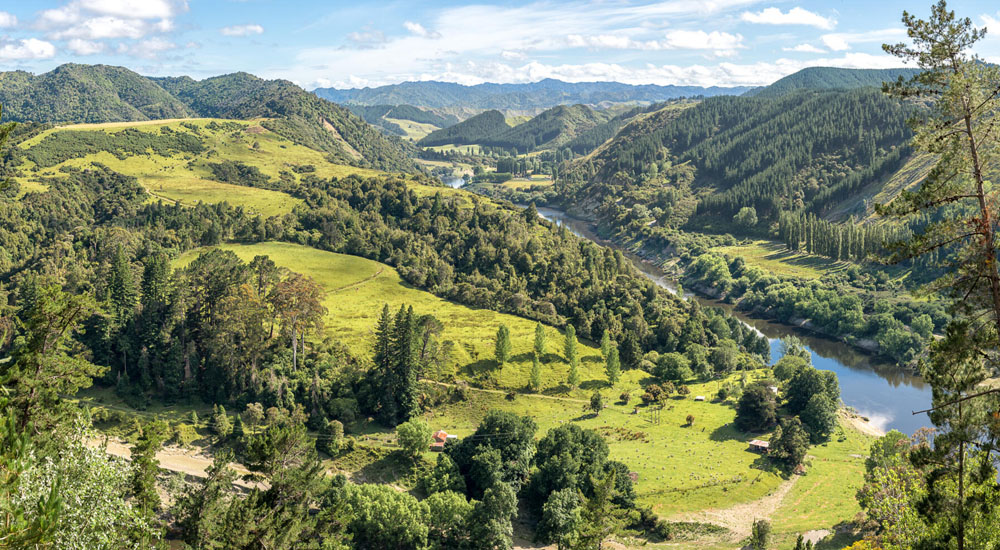
Fiordland National Park
Fiordland National Park, tucked away in the southwestern corner of the South Island, is a place that truly embodies the wild and untamed spirit of New Zealand. It’s a vast wilderness of towering fiords, cascading waterfalls, pristine lakes, and ancient rainforests, a landscape sculpted by glaciers and time. Every time I venture into Fiordland, I’m struck by its sheer scale and grandeur, a reminder of the powerful forces that have shaped this land.
The fiords themselves are the park’s most iconic feature, and rightly so. These deep, narrow inlets, carved by glaciers over millennia, are a sight to behold. Milford Sound, the most famous of the fiords, is a masterpiece of nature, with its sheer cliffs rising thousands of feet from the water, waterfalls cascading down their flanks, and seals basking on the rocks. I’ve taken a boat cruise through Milford Sound countless times, and it never fails to take my breath away.
But Fiordland is much more than just Milford Sound. Doubtful Sound, with its remote and tranquil beauty, is another must-see destination. It’s a haven for wildlife, and you might spot dolphins, penguins, or even whales as you explore its waters. And for those who love to hike, Fiordland offers some of the best trails in the country. The Milford Track, one of New Zealand’s Great Walks, is a multi-day trek that takes you through lush rainforests, alpine meadows, and past stunning waterfalls. The Kepler Track, another Great Walk, offers panoramic views of the fiords and surrounding mountains.
Fiordland is also a haven for those seeking a true wilderness experience. The park is home to a variety of unique and endangered species, including the takahē, a flightless bird once thought to be extinct, and the kakapo, the world’s only flightless parrot. You might even spot a kiwi bird if you’re lucky!
Exploring Fiordland requires a bit of planning, as it’s a remote and challenging environment. But the rewards are well worth the effort. Whether you choose to cruise through the fiords, hike through the mountains, or simply soak in the tranquility of this pristine wilderness, Fiordland National Park is a destination that will stay with you long after you’ve left its shores. It’s a place to reconnect with nature, challenge yourself, and experience the true essence of New Zealand’s wild beauty.
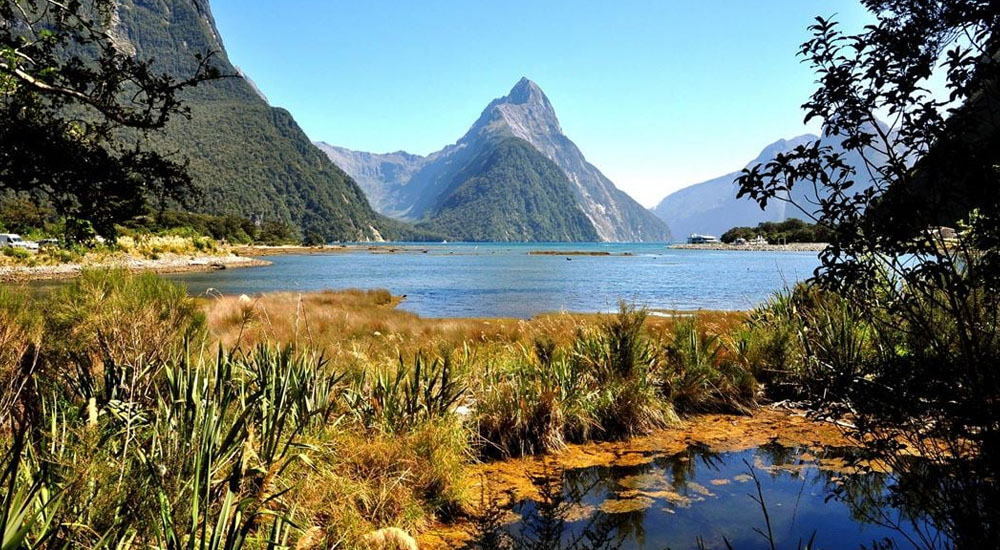
Aoraki/Mount Cook National Park
Aoraki/Mount Cook National Park, nestled in the heart of the Southern Alps, is a place that embodies the raw power and majesty of New Zealand’s high country. Whenever I visit, I’m struck by the sheer scale of the landscape – the towering peaks, the vast glaciers, and the sense of untamed wilderness that permeates the air. It’s a place that inspires awe and reminds me of just how small we are in the grand scheme of things.
The park is named after Aoraki/Mount Cook, New Zealand’s highest peak, which stands at a staggering 3,724 meters (12,218 feet). This majestic mountain, shrouded in snow and ice, dominates the landscape and has captivated mountaineers and adventurers for generations. Sir Edmund Hillary, the legendary Kiwi who conquered Mount Everest, honed his climbing skills on the slopes of Aoraki/Mount Cook, and the park continues to be a training ground for climbers from around the world.
But Aoraki/Mount Cook isn’t just for experienced mountaineers. There are plenty of ways to experience the park’s beauty, even if you’re not planning to summit the peak. The Hooker Valley Track, one of the most popular walks in New Zealand, is a relatively easy three-hour return journey that takes you through stunning alpine scenery, past glacial lakes, and to the foot of the Hooker Glacier. It’s a walk I’ve done many times, and it never fails to impress.
For those seeking a more challenging adventure, there are numerous other hiking trails to explore, from the Sealy Tarns Track, which climbs steeply to offer panoramic views, to the Mueller Hut Route, a demanding overnight trek that rewards you with breathtaking vistas of the surrounding mountains and glaciers. And if you’re keen to get up close and personal with the glaciers, you can join a guided ice climbing or glacier hiking tour. It’s an experience that will take your breath away – literally!
Aoraki/Mount Cook is also a fantastic place for stargazing. The park is part of the Aoraki Mackenzie International Dark Sky Reserve, one of the best places in the world to observe the night sky. On a clear night, the Milky Way stretches across the heavens, a dazzling display of stars that will leave you feeling humbled and insignificant.
Whether you’re a seasoned hiker, a budding photographer, or simply someone who appreciates the beauty of the natural world, Aoraki/Mount Cook National Park has something to offer everyone. It’s a place to challenge yourself, connect with nature, and experience the raw power and majesty of New Zealand’s Southern Alps.
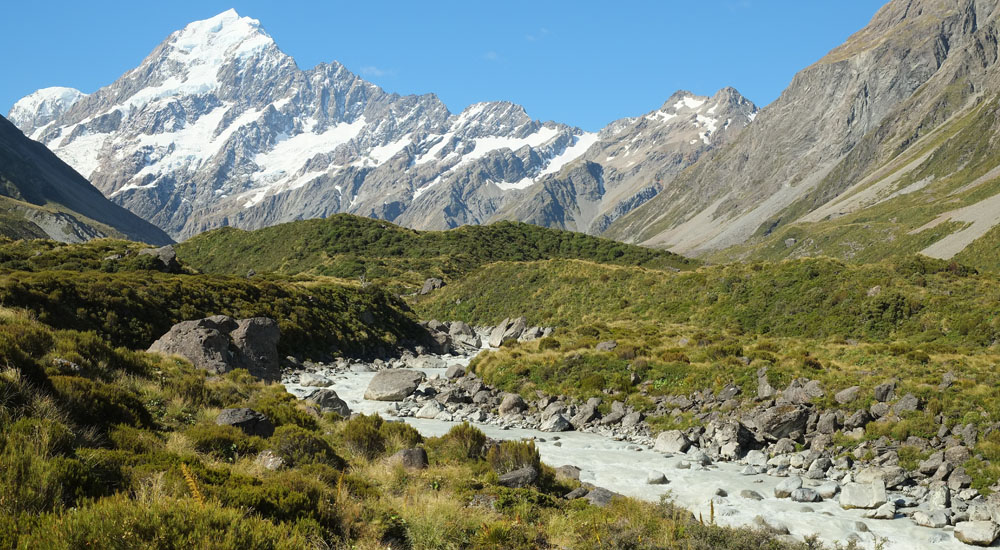
Mount Aspiring National Park
Mount Aspiring National Park, nestled in the heart of the Southern Alps, is a place that truly captures the essence of New Zealand’s wild beauty. It’s a land of towering mountains, glaciers, pristine lakes, and ancient forests, where you can escape the hustle and bustle of everyday life and immerse yourself in the tranquility of nature.
Step into Mount Aspiring National Park and you’ll discover a world of diverse landscapes. The park is home to Mount Aspiring, one of New Zealand’s highest peaks, rising majestically above the surrounding mountains. Its glaciers, such as the Rob Roy Glacier, snake their way down from the mountaintops, carving their way through the rugged landscape. You’ll also find crystal-clear lakes, like Lake Wanaka and Lake Hawea, lush rainforests, and expansive alpine meadows, each offering a unique glimpse into the park’s natural beauty.
Mount Aspiring National Park offers a wealth of opportunities for outdoor enthusiasts and nature lovers. For hikers and trampers, there are trails to suit all levels of fitness, from short walks to challenging multi-day treks. The Routeburn Track, one of New Zealand’s Great Walks, is a popular choice for those seeking a longer adventure, offering stunning views of the park’s glaciers and mountains. For a shorter but equally rewarding hike, consider the Key Summit Track, which leads to panoramic views of Lake Wanaka and the surrounding peaks.
For those who prefer to explore the park by water, there are plenty of opportunities for kayaking, canoeing, and fishing. The park’s rivers and lakes are home to a variety of fish, including trout and salmon, and you can also enjoy the tranquility of paddling through the pristine waters surrounded by stunning scenery.
If you’re looking for a more adventurous experience, you can try mountaineering or climbing on the park’s many peaks. Mount Aspiring itself is a popular destination for experienced climbers, while other peaks, such as Mount Brewster and Mount Hooker, offer less challenging but equally rewarding climbs.
Mount Aspiring National Park is also home to a diverse range of wildlife, including the elusive kea, a native parrot known for its intelligence and playful curiosity. You might also spot deer, wallabies, and even the occasional kiwi bird.
Whether you’re seeking adventure, relaxation, or simply a chance to connect with nature, Mount Aspiring National Park has something to offer everyone. It’s a place where you can escape the hustle and bustle of everyday life and immerse yourself in the beauty and tranquility of the natural world.
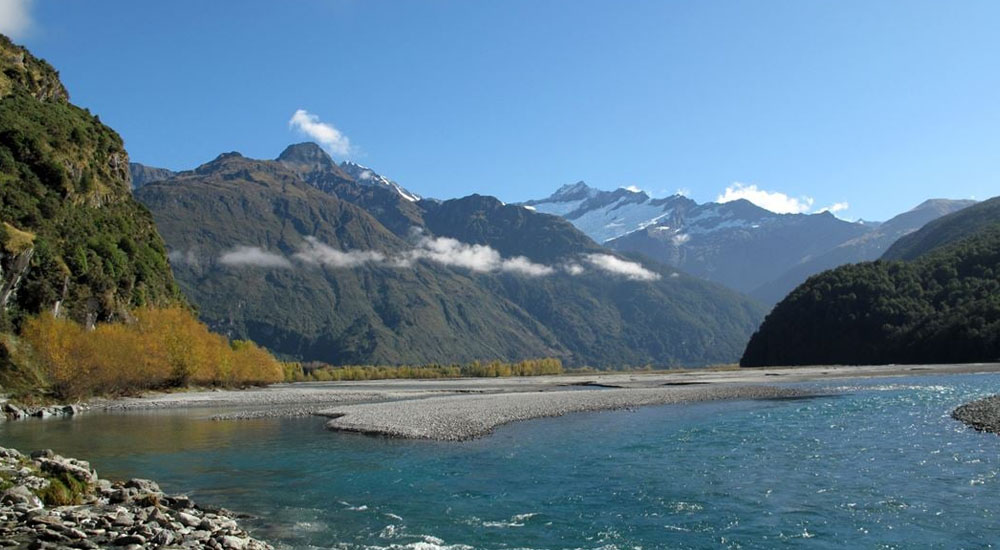
Arthur’s Pass National Park
Arthur’s Pass National Park, straddling the main divide of the Southern Alps, is a place of dramatic contrasts and breathtaking scenery. It’s a land where towering peaks meet deep gorges, where cascading waterfalls plunge into icy rivers, and where dense beech forests give way to alpine meadows. Whenever I find myself in Arthur’s Pass, I’m struck by the raw power of nature and the resilience of life that thrives in this challenging environment.
The park is a haven for hikers and outdoor enthusiasts, offering a network of trails that cater to all levels of experience. The Bealey Spur Track, a short but rewarding climb, leads to panoramic views of the surrounding mountains and valleys. For a more challenging adventure, the Avalanche Peak Track takes you to the summit of Avalanche Peak, rewarding you with breathtaking vistas of the park. And for those seeking a multi-day trek, the Mingha-Deception Track offers a journey through diverse landscapes, from river valleys to alpine passes.
Arthur’s Pass is also home to a variety of fascinating wildlife. Keep an eye out for the cheeky kea, the world’s only alpine parrot, known for its playful antics and intelligence. You might also spot the elusive rock wren, perfectly camouflaged against the rocky terrain, or the New Zealand falcon (kārearea) soaring high above the mountain peaks.
The park’s village, Arthur’s Pass Village, is a charming and welcoming place to base yourself while exploring the area. It offers a range of accommodation options, from cozy backpacker hostels to comfortable hotels, as well as cafes and restaurants where you can refuel after a day of adventure.
Whether you’re seeking a challenging hike, a peaceful nature walk, or simply a chance to escape the hustle and bustle of everyday life, Arthur’s Pass National Park is a destination that will leave a lasting impression. It’s a place to connect with the raw beauty of New Zealand’s Southern Alps and experience the tranquility of the mountains.
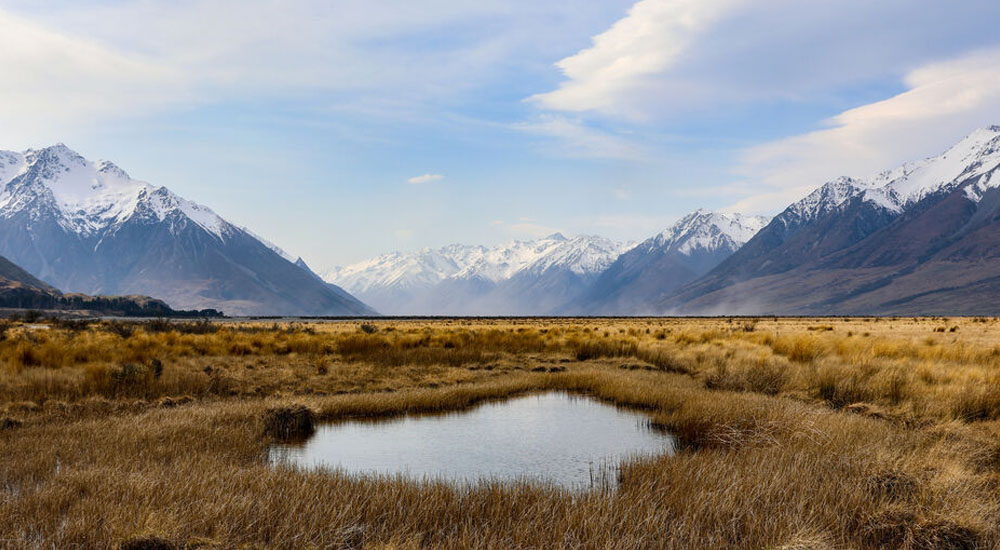
Paparoa National Park
Paparoa National Park, on the wild West Coast of the South Island, is a place that always leaves me feeling invigorated and humbled by the power of nature. It’s a landscape of dramatic contrasts, where rugged mountains meet the tempestuous Tasman Sea, and where dense rainforests cloak limestone canyons and caverns. I love exploring this park, with its sense of adventure and its unique blend of natural wonders.
One of the most iconic features of Paparoa is the Pancake Rocks at Punakaiki. These fascinating limestone formations, resembling stacks of pancakes, were sculpted by centuries of erosion. I’ve spent hours watching the waves crash against the rocks, sending plumes of spray high into the air through blowholes. It’s a mesmerizing spectacle, and a reminder of the relentless forces that shape our world.
But Paparoa has so much more to offer than just the Pancake Rocks. The park is also home to a vast network of caves, many of which are adorned with intricate stalactites and stalagmites. I’ve ventured into some of these caves, and it’s like stepping into another world, a realm of darkness and silence where you can truly appreciate the beauty of the underground world.
For those who love to hike, Paparoa offers a variety of trails, from short walks to challenging multi-day treks. The Paparoa Track, one of New Zealand’s Great Walks, is a must-do for experienced hikers. This 55-kilometer (34-mile) track traverses the park’s diverse landscapes, taking you through lush rainforests, across alpine tops, and past limestone karst landscapes. It’s a journey that will challenge you physically and reward you with breathtaking views.
If you’re looking for a shorter walk, the Truman Track is a great option. This track winds through nikau palm forest and leads to the impressive Truman Track Suspension Bridge, which spans a deep gorge. And for those who want to experience the park’s coastal beauty, the Pororari River Track is a gentle stroll that follows the river to a secluded beach.
Paparoa National Park is also a haven for wildlife. Keep an eye out for the Westland black petrel, a rare seabird that breeds only on the Punakaiki coast. You might also spot the great spotted kiwi, New Zealand’s largest kiwi species, which roams the park’s forests at night. And if you’re lucky, you might even catch a glimpse of the elusive whio (blue duck), which thrives in the park’s pristine rivers.
Whether you’re seeking adventure, tranquility, or simply a chance to connect with nature, Paparoa National Park is a destination that will leave a lasting impression. It’s a place to explore, discover, and appreciate the wild beauty of New Zealand’s West Coast.
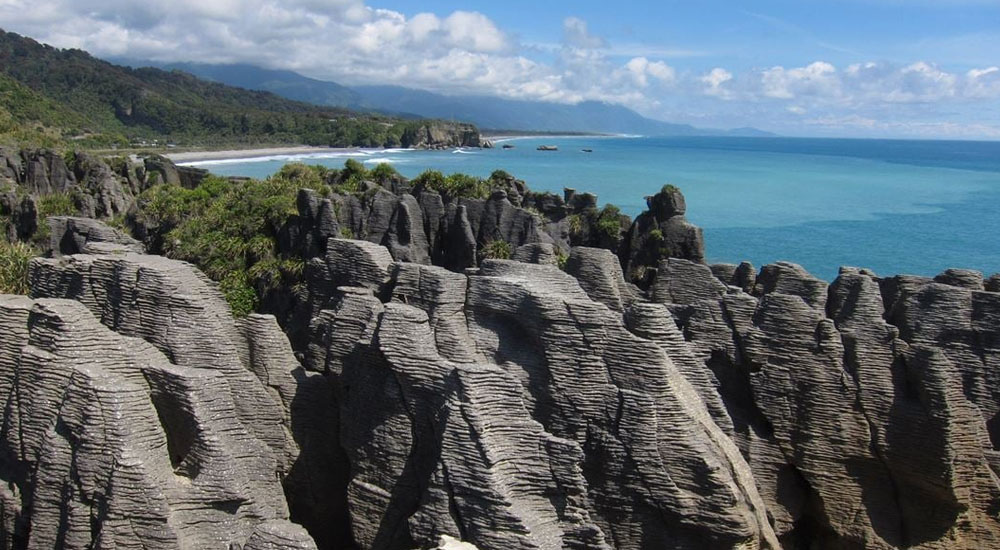
Westland Tai Poutini National Park
Westland Tai Poutini National Park, stretching along the wild West Coast of the South Island, is a place of dramatic contrasts and breathtaking beauty. It’s a land where towering mountains meet the Tasman Sea, where glaciers carve their way through ancient rainforests, and where the power of nature is on full display. Whenever I visit this park, I’m struck by its raw and untamed energy, a reminder of the forces that have shaped this land over millions of years.
One of the most captivating features of Westland Tai Poutini is its glaciers. Franz Josef Glacier and Fox Glacier, two of the most accessible glaciers in the world, descend from the Southern Alps, their icy tongues reaching down into lush rainforest. I’ve had the opportunity to walk on these glaciers, and it’s an experience I’ll never forget. The feeling of crunching through the ice, surrounded by towering walls of blue ice and deep crevasses, is truly awe-inspiring.
But Westland Tai Poutini is more than just glaciers. The park is also home to diverse ecosystems, from the rugged mountains and alpine meadows to the dense rainforests and wetlands. The Copland Track, one of my favorite hikes in the park, takes you through lush rainforest, alongside the roaring Copland River, and to Welcome Flat, where you can soak in natural hot pools beneath a canopy of stars. It’s a truly magical experience.
The park’s coastline is equally captivating, with its wild beaches, dramatic cliffs, and abundant birdlife. Okarito Lagoon, a haven for wading birds and waterfowl, is a must-visit for bird enthusiasts. I’ve spent many peaceful hours kayaking through the lagoon, watching herons, spoonbills, and white-faced herons go about their daily routines.
Exploring Westland Tai Poutini is an adventure in itself. The weather on the West Coast can be unpredictable, so be prepared for rain and changing conditions. But even on a cloudy day, the park’s beauty shines through. The rainforests take on a mystical quality, the waterfalls become even more dramatic, and the glaciers seem to glow with an ethereal blue light.
Whether you’re seeking adventure on the glaciers, tranquility in the rainforests, or simply a chance to witness the raw power of nature, Westland Tai Poutini National Park is a destination that will leave a lasting impression. It’s a place to escape the ordinary, challenge yourself, and connect with the wild beauty of New Zealand’s West Coast.
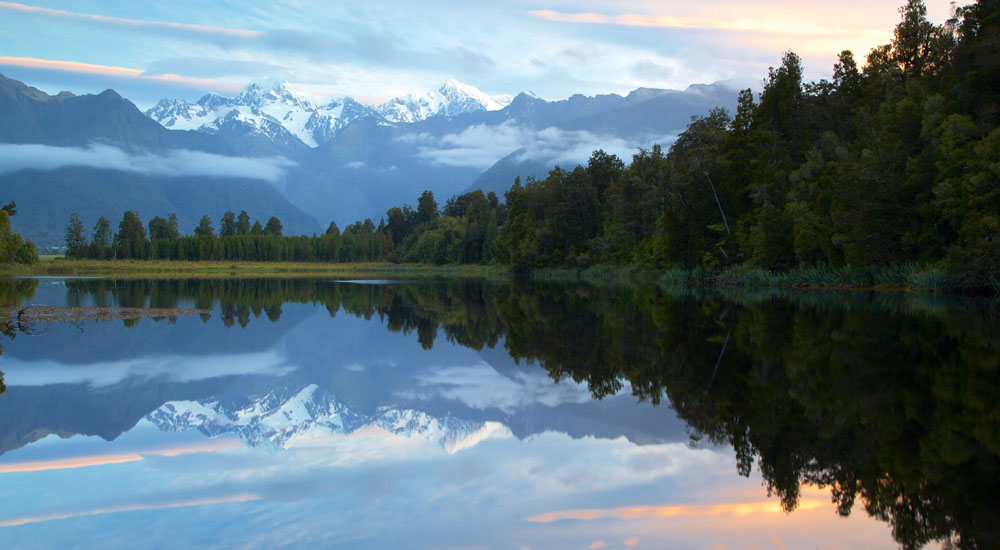
Abel Tasman National Park
Abel Tasman National Park, nestled at the top of the South Island, is a place that holds a special place in my heart. It’s a coastal paradise, where golden sand beaches meet turquoise waters, and lush native forests cling to the hillsides. Whenever I visit, I feel a sense of peace and tranquility wash over me, as if the park itself is welcoming me back to a simpler way of life.
One of the things I love most about Abel Tasman is its accessibility. Unlike some of New Zealand’s more remote national parks, Abel Tasman is relatively easy to get to, with several entry points along its coastline. This makes it a great option for families, those who are new to hiking, or anyone who wants to experience the beauty of a national park without having to commit to a multi-day trek.
That being said, if you are looking for a longer adventure, the Abel Tasman Coast Track is a must-do. It’s one of New Zealand’s Great Walks, and it’s a journey that will stay with you long after you’ve left the park. I’ve hiked sections of this track, and it’s simply stunning. You’ll wind your way through lush forests, emerge onto secluded beaches, and cross swing bridges with breathtaking views of the coastline.
But Abel Tasman isn’t just about hiking. It’s also a fantastic place to experience the park from the water. Kayaking is a popular activity here, and it’s a great way to explore the coastline, discover hidden coves, and get up close to the marine life. I’ve paddled through the clear waters of Abel Tasman, and it’s an experience I highly recommend. You might even spot a playful seal or a pod of dolphins!
Another great way to experience the park is by boat. There are several operators that offer cruises and water taxi services, allowing you to access different parts of the park and enjoy the scenery from a different perspective. You can even take a scenic flight over the park for a bird’s-eye view of its beauty.
No matter how you choose to explore it, Abel Tasman National Park is a destination that will capture your heart. It’s a place to relax, recharge, and reconnect with nature. It’s a place where you can escape the hustle and bustle of everyday life and immerse yourself in the beauty of New Zealand’s coastal paradise.
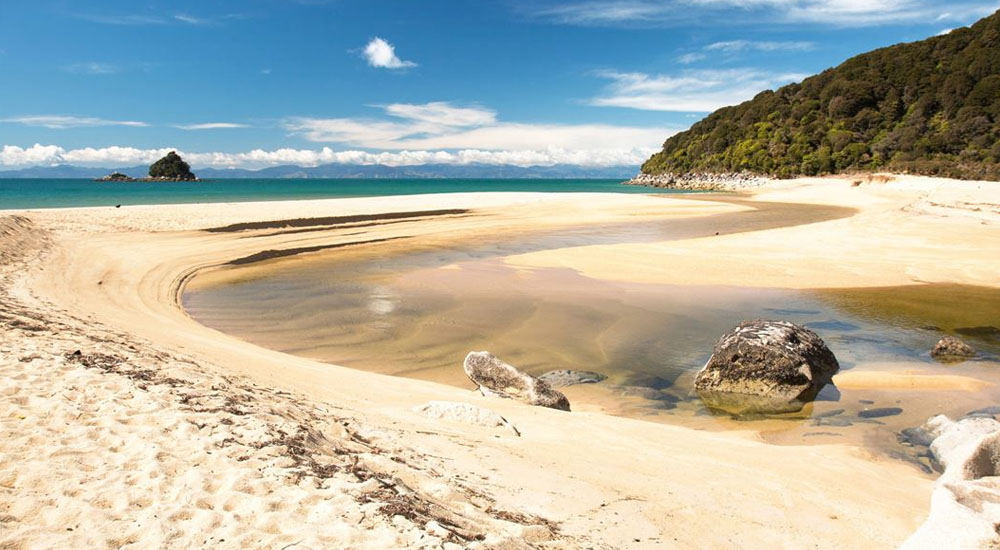
Rakiura National Park
Rakiura National Park, located on Stewart Island, is New Zealand’s newest national park and a truly special place. It’s a land of rugged coastlines, dense forests, and unique wildlife, where you can experience the tranquility of a truly remote and unspoiled environment.
Stewart Island, or Rakiura as it’s known in Māori, is a place that has always held a sense of mystery and allure for me. It’s the third-largest island in New Zealand, but it feels like a world apart. The pace of life is slower here, the people are friendly and welcoming, and the natural beauty is simply breathtaking.
Rakiura National Park covers about 85% of the island, protecting its diverse ecosystems and unique wildlife. One of the park’s biggest drawcards is its population of kiwi birds. Stewart Island is home to the Southern Tokoeka kiwi, and it’s one of the best places in New Zealand to see these elusive birds in their natural habitat. I’ve been lucky enough to spot a kiwi on a night walk in Rakiura, and it’s an experience I’ll never forget.
The park also offers a fantastic network of hiking trails, ranging from short walks to multi-day treks. The Rakiura Track, one of New Zealand’s Great Walks, is a three-day journey that takes you through some of the island’s most stunning scenery, including secluded beaches, lush forests, and rugged coastlines. For a shorter walk, the Horseshoe Point Track offers panoramic views of Paterson Inlet and the surrounding islands.
Rakiura National Park is also a haven for birdwatchers. The island is home to a variety of native birds, including the kākā, a playful parrot with a distinctive call, and the yellowhead (mōhua), a small bird with a bright yellow head and breast. You might also spot the rare and endangered yellow-eyed penguin, which breeds on the island’s secluded beaches.
Whether you’re seeking adventure, wildlife encounters, or simply a chance to escape the hustle and bustle of everyday life, Rakiura National Park is a destination that will leave a lasting impression. It’s a place to reconnect with nature, discover the unique beauty of Stewart Island, and experience the tranquility of New Zealand’s wild south.
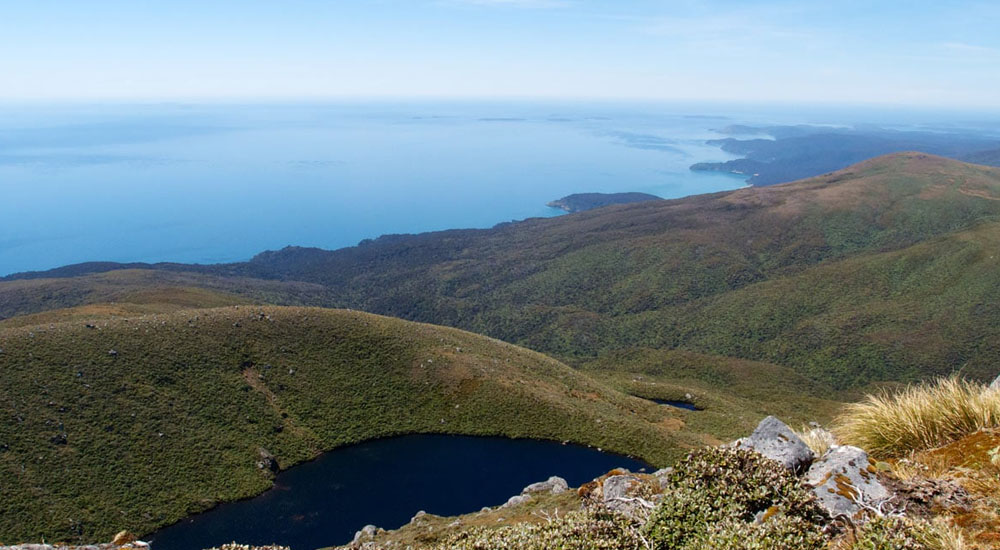
Kahurangi National Park
Kahurangi National Park, New Zealand’s second-largest national park, is a hidden gem that I’ve been fortunate enough to explore. Nestled in the northwest corner of the South Island, this vast wilderness is a treasure trove of natural wonders, from towering mountains and ancient forests to pristine rivers and unique geological formations. It’s a place that captures the imagination and leaves a lasting impression on all who visit.
Step into Kahurangi and you’ll discover a world of diverse landscapes, each more breathtaking than the last. The park is home to some of the oldest rocks in New Zealand, dating back over 400 million years, and its diverse geology has created a fascinating array of landforms, including towering mountains, rugged valleys, limestone caves, and karst formations. The park is also home to the largest population of great spotted kiwi, as well as giant wetas, carnivorous snails, and one of the world’s largest cave spiders.
One of the most famous features of Kahurangi National Park is the Heaphy Track, a 75-kilometer (47-mile) multi-day tramping track that traverses the heart of the park. The track winds through a variety of landscapes, including towering beech forests, alpine meadows, and rugged coastlines. It’s a challenging but rewarding trek, and it’s a great way to experience the true essence of Kahurangi.
If you’re looking for shorter hikes or walks, there are plenty of other options to choose from. The Abel Tasman Track, which follows the park’s northern boundary, offers stunning views of the coast and Golden Bay. The Wairoa Gorge Track, a short but scenic walk, leads you to a beautiful waterfall and a historic bridge. And for those who want to explore the park’s karst features, the Moria Gate and Mirror Tarn Loop Track is a must-see.
No matter how you choose to explore Kahurangi National Park, you’re sure to be amazed by its natural beauty and diverse ecosystems. It’s a place that will stay with you long after you’ve left, reminding you of the power and wonder of New Zealand’s wilderness.
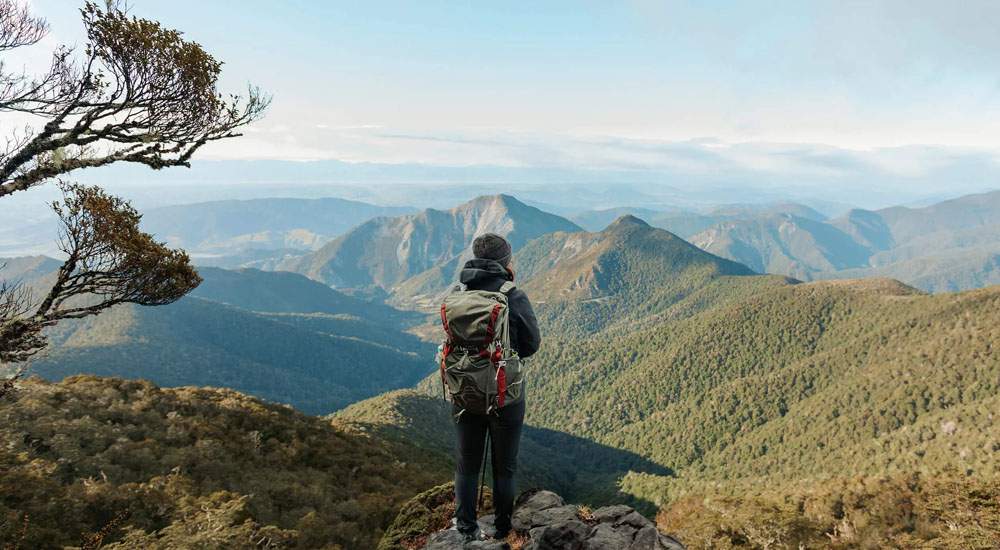
Nelson Lakes National Park
Nelson Lakes National Park, nestled in the heart of the South Island, is a place that speaks to my soul. It’s a landscape of contrasts, where towering mountains meet tranquil lakes, and where ancient forests give way to alpine meadows. Every time I visit, I’m struck by the sense of peace and serenity that pervades this park, a feeling that’s hard to find in our busy modern world.
The park is named after its two magnificent lakes, Rotoiti and Rotoroa. These crystal-clear lakes, surrounded by beech forests and towering peaks, are a haven for water activities. I’ve spent many happy hours kayaking on these lakes, exploring their hidden coves and soaking in the tranquility of the surroundings. And for those who love to fish, the lakes are teeming with trout and salmon.
But Nelson Lakes isn’t just about water activities. The park also offers a fantastic network of hiking trails, catering to all levels of fitness and experience. The Travers-Sabine Circuit, one of New Zealand’s Great Walks, is a challenging multi-day trek that takes you through some of the park’s most spectacular scenery. I’ve tackled this trek myself, and it’s an experience I’ll never forget. The views from the mountain passes are simply breathtaking.
If you’re looking for a shorter walk, the Mount Robert Circuit is a great option. It’s a moderate climb that rewards you with panoramic views of Lake Rotoiti and the surrounding mountains. And for families with young children, the Nature Trail around Lake Rotoiti is a gentle and enjoyable stroll.
Nelson Lakes National Park is also a haven for wildlife. Keep an eye out for the elusive kākā, a native parrot with a mischievous personality, or the kea, the world’s only alpine parrot, known for its intelligence and playful antics. You might also spot a native long-tailed bat flitting through the trees at dusk, or hear the haunting call of the morepork owl.
Whether you’re seeking adventure, relaxation, or simply a chance to connect with nature, Nelson Lakes National Park has something to offer everyone. It’s a place where you can escape the crowds, recharge your batteries, and experience the true beauty of New Zealand’s wilderness.
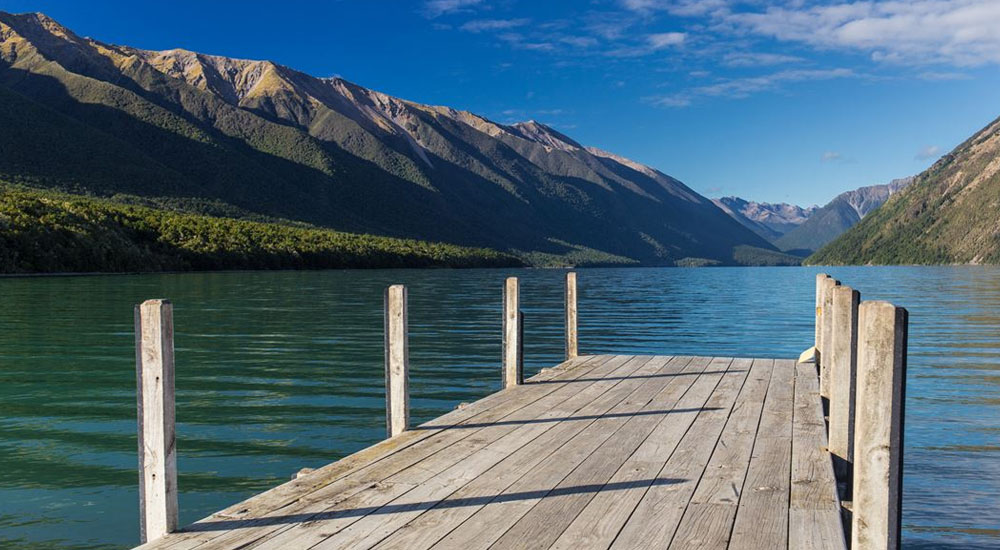
- Plan your trip: Research the park you plan to visit and choose trails and activities that are suitable for your fitness level and experience.
- Check the weather: New Zealand’s weather can be unpredictable, so be prepared for all conditions.
- Pack appropriate gear: Bring sturdy hiking boots, waterproof clothing, sunscreen, a hat, and plenty of water.
- Respect the environment: Stay on marked trails, pack out your rubbish, and leave no trace.
- Be aware of wildlife: New Zealand is home to a variety of unique wildlife, so be aware of your surroundings and keep a safe distance from animals.
What are the Great Walks of New Zealand?
New Zealand's Great Walks are a collection of premier multi-day hikes that showcase some of the country's most spectacular scenery. These trails are renowned for their well-maintained tracks, comfortable backcountry huts, and diverse landscapes, ranging from towering mountains and glaciers to pristine forests, sparkling lakes, and rugged coastlines.
Here are the ten Great Walks of New Zealand:
- Lake Waikaremoana Track
- Tongariro Northern Circuit
- Whanganui Journey (canoe journey)
- Abel Tasman Coast Track
- Heaphy Track
- Paparoa Track
- Routeburn Track
- Kepler Track
- Milford Track
- Rakiura Track
How can I book accommodation in a National Park?
Booking accommodation in New Zealand's National Parks is essential, especially during peak season (October to April). You can book accommodation online through the Department of Conservation (DOC) website or in person at DOC visitor centers.
Here are the types of accommodation available in National Parks:
- Great Walk Huts: These huts provide basic accommodation along the Great Walks, with bunk beds, cooking facilities, and toilets.
- Standard Huts: These huts are located on other trails and offer similar facilities to Great Walk Huts.
- Campsites: Campsites are available in many National Parks, offering basic facilities such as toilets and water.
- Lodges and Chalets: Some National Parks have lodges and chalets that offer more comfortable accommodation with private rooms and amenities.
Are there any fees for entering National Parks?
Most of New Zealand's National Parks are free to enter. However, there are fees for some activities, such as camping, staying in huts, and accessing certain roads or facilities. You can find information about fees on the DOC website or at visitor centers.
What are the best times of year to visit different National Parks?
The best time to visit New Zealand's National Parks depends on the specific park and your interests. Here's a general overview:
- Spring (September - November): Pleasant temperatures, blooming wildflowers, and fewer crowds.
- Summer (December - February): Warmest weather, ideal for swimming and water activities, but also the busiest time.
- Autumn (March - May): Stunning autumn foliage, cooler temperatures, and fewer crowds.
- Winter (June - August): Snow-covered landscapes, ideal for skiing and snowboarding in some parks, but some tracks and facilities may be closed.
It's always best to check the specific park's website or contact a visitor center for the most up-to-date information on seasonal conditions and activities.
Tap here for more insight on the best time to visit New Zealand
New Zealand’s National Parks are truly special places. They offer a chance to escape the hustle and bustle of everyday life and connect with the natural world. So, what are you waiting for? Start planning your adventure today!
You Might Also Like…
The Best Winter Activities in New Zealand
Experience the magic of a New Zealand winter! From skiing and snowboarding to soaking in hot springs and witnessing the Southern Lights, discover unforgettable winter activities and destinations.
The Best Outdoor Activities in Fiordland National Park
Discover the magic of Fiordland National Park, a World Heritage wilderness of towering fiords, cascading waterfalls, and pristine lakes. Explore Milford Sound, Doubtful Sound, and hidden gems on unforgettable adventures.
The 5 Best Scenic Road Trips in New Zealand
Experience the beauty of New Zealand with these 5 unforgettable scenic road trips. Discover stunning landscapes, hidden gems, and unforgettable adventures on the open road.
25
years of
Why Travel With The Conqueror Adventures
When it comes to embarking on extraordinary journeys, you have a choice. So why choose The Conqueror Adventures? Our unwavering commitment to redefining adventure travel sets us apart. We don’t just offer hiking tours; we offer experiences that challenge limits, ignite curiosity, and foster meaningful connections.
Our meticulously crafted adventures are designed to leave a profound and lasting impact, pushing you to step boldly into the uncharted. Discover why adventurers around the world choose to explore with us, and join our global community of explorers, wanderers, and adventure enthusiasts. Your extraordinary journey starts here.

